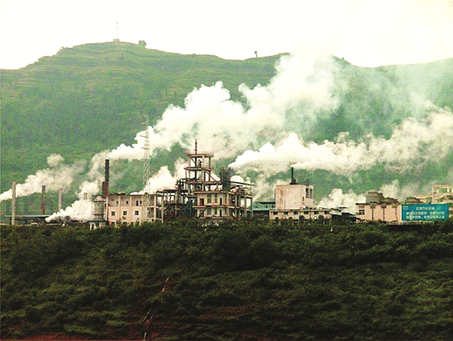

10/10/2016
A national action plan for air quality management by 2020, vision to 2025 was approved by Prime Minister at Decision no. 985a/QD-TTg on 1st June 2016. It plays an important role in strengthening air pollution management, particularly implementing Law on Environmental Protection 2014 and Decree no. 38/2015/ND-CP on waste and scarp management suitable for the Vietnamese context.
In recent years, in Việt Nam, air pollution has created significant impacts on public health and other socioeconomic aspects. However, air quality management is facing challenges and obstacles. Air pollution prevention and mitigation have not been conducted properly. Monitoring and information on air pollution have failed to meet practical requirements.
 |
| Objectives of the national action plan for air quality management is emission control and air quality monitoring |
Law on Environmental Protection 2014 and Decree no. 38/2015/ND-CP have some regulations on air quality management. To strengthen air quality management, Prime Minister has enacted a national action plan for air quality management by 2020, visions to 2025.
The national action plan’s goal is strengthening air quality management via emission control and ambient air quality monitoring in order to improve air quality and protect human health. Priorities are given to controlling emission from industry, energy and transport sectors. By 2020, 80% of steel, chemical and fertilizer production facilities will have treated dust SO2, NOx and CO emission to meet with national regulations; 90% of thermal power plans, 80% of cement factories, 70% of steel, chemical and fertilizer production facilities will have installed automatic emission monitoring equipment to continuously supervise parameters regulated in national technical regulations. Emission inventories will have been conducted in 90% of thermal power plants, 80% of cement factories, and 70% of steel, chemical and fertilizer production. Mitigation measures for PM10 and PM2.5 will have been conducted for major emission sources. Implementation of Prime Minister’s Decision no. 909/QD-TTg dated 17/6/2010 on approving a program on vehicle emission control in provinces and cities, Prime Minister’s Decision no. 49/2011/QD-TTg dated 1/9/2011 on a road map for applying newly manufactured, assembled and imported cars and motorbikes’ emission standards, and strengthening national capacity on greenhouse gas control, contributing to Vietnam’s greenhouse gas reduction will have been completed.
| Good control of emission form cars and motorbikes in provinces and cities |
In addition to emission control, the national action plan sets out objectives of supervising and monitoring ambient air quality. More specifically, the current status of PM10 and PM2.5 pollution in special urban areas and central level cities will be assessed and the number of automatic air monitoring stations will be increased following a national master plan for environmental monitoring networks. Parameters set out in national technical regulations and VOCs and HC will be regularly monitored.
The national action plan highlights the view that air quality management should be suitable with the Vietnamese socioeconomic conditions to ensure effectiveness and use prevention as a guiding principle, combined with pollution remediation and gradually improving ambient air quality. Air quality management shall be based on cost-benefit analyses which are regularly conducted with a management roadmap suitable in the Vietnamese context. Air quality management is the responsibilities of emission owners and state management authorities with people’s supervision.
To achieve these objectives, the national action plan sets out the following tasks and measures: completing mechanisms, policies and regulations on air quality management; completing organizational structure and strengthening capacity in air quality management; preventing and mitigating emission pollution; completing financial mechanisms, diversifying resources for air quality management; international cooperation and science and technology in air quality management; inspecting and supervising compliance in air quality management; and education and raising awareness on air quality management.
In the meantime, the national action plan requires participation and cooperation from Ministries/sectors, in particular those of Ministry of Natural Resources and Environment (MONRE), Ministry of Industry and Trade, Ministry of Transport and authorities from Central to local levels. In addition, the national action plan sets out specific programs and priority tasks to implement the action plan with clear timeframes, implementing agencies and expected results.
Air quality management is the responsibilities of not only Central and provincial state management agencies but also individuals, organizations and enterprises. Therefore, it is necessary to have joint efforts of the whole society in raising awareness and increasing cooperation in protecting the air for public health. The national action plan is a foundation for implementing air quality management in Việt Nam in a comprehensive, systematical and locally customized manner and in line with global trends in managing air quality.
At present, as a leading agency, MONRE is urgently developing a detailed program for implementing Prime Minister’s Decision no. 985a/QD-TTg. However, to implement the Decision effectively, in the coming period, in addition to domestic resources, Việt Nam will need assistances from other countries and international organizations in completing mechanisms and policies, strengthening capacity in air pollution control and in developing database on emission. Participation by scientists and research institutions in research and development for applying advanced technology in air quality management is also needed.
MSc. Lê Hoài Nam
Director of Pollution Control Department
Vietnam Environment Administration